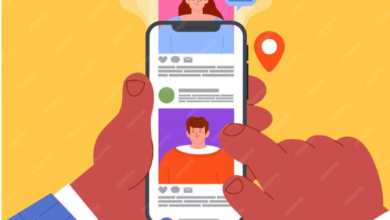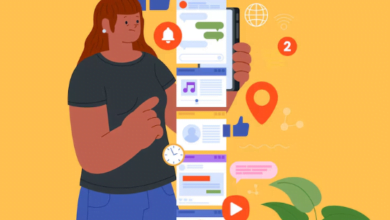What is Intent-Based Marketing? And that is important in SEO
intent-based targeting

In today’s digital age, marketers are always looking for new and innovative ways to reach their target audience. One approach that has garnered a lot of attention in recent years is intent-based marketing (IBM). Intent-based marketing is a data-driven marketing approach that understands a customer’s intentions before targeting them with a specific message or offer. This approach is critical to Search Engine Optimization (SEO) as it helps businesses reach potential customers more effectively, resulting in higher conversion rates and a better return on investment.
What is Intent-Based Marketing?

Intent-based marketing is a marketing strategy that involves analyzing data to determine a prospect’s intent before marketing. This approach involves identifying the signals customers are sending through their online behavior and using that information to deliver the right message to the right person at the right time.
IBM is built on the concept of understanding customer intent. Understanding customer intent means understanding what they are looking for when searching for a product or service. By understanding customer intent, companies can tailor their marketing efforts to the specific needs of each customer.
Also Reads, Top-digital-marketing-strategies-in-2023/
The Importance of Intent-Based Marketing in SEO:
The Importance of Intent-Based Marketing in SEO: SEO is an integral part of digital marketing, and intent-based marketing is essential to success in this space. Here are some reasons why intent marketing is important for SEO:
Targeted Traffic:
intent marketing helps businesses reach the right audience by analyzing their online behavior. By understanding what potential customers are looking for, businesses can create content tailored to their needs. This approach helps drive more targeted traffic to your website, which leads to higher conversion rates.
Higher ROI:
IBM helps companies achieve a better return on investment when they reach the customers most likely to convert.That means companies don’t waste money promoting people who aren’t interested in their product or service.
Better User Experience:
By understanding customer intent, organizations can provide a better user experience. When customers are looking for something specific, they want to find it quickly and easily. By giving them the information they need, businesses can create a positive user experience that keeps customers coming back.
Increased Engagement:
IBM helps businesses increase engagement by creating content tailored to their audience. When customers see that a company understands their needs, they are more likely to engage with that company. This leads to higher brand loyalty and better customer loyalty.
How to implement intent-based marketing in SEO:
Implementing IBM in SEO requires a data-driven approach. Here are some steps companies can take to incorporate IBM into their SEO strategy:
Customer Behavior Analysis:
The first step in implementing IBM is customer behavior analysis. This includes studying what customers are searching for, what keywords they are using, and what questions they are asking. By analyzing customer behavior, companies can better understand what customers are looking for and what they need.
Create content that meets customer needs:
After analyzing customer behavior, companies can create content that meets their needs. This content should be tailored to the specific needs of each customer based on their online
behavior. Optimizing content for SEO:
Creating content that meets customers’ needs is not enough. Businesses also need to optimize this content for SEO.This involves using the right keywords, creating high-quality content, and ensuring that the content is easy to read and understand.
Monitor and Adjust:
Finally, businesses must monitor their IBM strategy and adjust it as needed. This involves tracking key metrics, such as conversion rates and bounce rates, and making changes to the strategy based on the results.
What is intent-based targeting?
In the world of digital advertising, reaching the right audience at the right time can be crucial. This is where intent-based targeting comes into play.
Intent-based targeting is a marketing strategy that uses customer data to identify and target people most likely to be interested in a specific product or service. By understanding potential customers’ intentions, companies can create more effective advertising campaigns with higher conversion rates and a better return on investment (ROI). In this article, we take a look at what intent-based targeting is and how it can benefit businesses in today’s digital environment.
Measuring the Success of Intent-Based Marketing Campaigns?
Measuring the success of intention-based marketing campaigns is key to understanding whether your strategies are working or not. Here are some key metrics you can use to measure the success of your intent-based marketing campaigns:

Conversion Rate:
Conversion rate is one of the most important metrics for measuring the success of marketing campaigns. Measures the percentage of users who took the desired action after clicking your ad, e.g. B. made a purchase, filled out a form or signed up for a newsletter. By tracking your conversion rate, you can understand how many leads are converting to customers and identify areas where you may need to make changes to improve your conversion rate.
Click-through rate (CTR):
click-through rate measures the percentage of users who clicked on an ad after seeing it.A high CTR means your ad is relevant to your audience, while a low CTR could mean you need to change your ad copy or targeting. By tracking your CTR, you can optimize your campaigns to get more clicks and increase your chances of conversion.
Cost per Conversion (CPC):
Cost per conversion is the amount you spend on your ad per conversion. By tracking CPC, you can identify areas where you may be overspending and adjust your campaigns to optimize your budget. A lower CPC means you’re spending less money to get more conversions, which is a key indicator of a successful intent-based marketing campaign.
Return on Investment (ROI):
ROI measures the amount of revenue your advertising campaigns generate compared to the money spent on advertising. A higher ROI means your campaigns are generating more revenue than advertising costs, which is a key indicator of a successful intent-based marketing campaign.
Engagement Rate:
The Engagement Rate measures the percentage of users who have interacted with your ad, such as B. Likes, comments or shares. A higher engagement rate indicates that your ad is reaching your target audience and generating interest in your brand. By tracking your engagement rate, you can identify areas where you may need to make changes to improve your ad copy or targeting.
Case Studies: Successful Intent-Based Marketing Campaigns?
There have been many successful intent-based marketing campaigns over the years, and here are some examples of companies that have utilized this approach to achieve their marketing goals:

Toyota:
In 2023, Toyota launched an intent-based marketing campaign for its RAV4 Hybrid. The campaign targeted potential buyers who were actively searching for a new vehicle online. By analyzing customer data, Toyota was able to identify users who had expressed an interest in SUVs, eco-friendly cars, and Toyota vehicles.
Toyota then created personalized ads for each user, highlighting the features of the RAV4 Hybrid that would be most appealing to them.As a result, the campaign achieved a 2.8% CTR, well above the industry average.
Sephora:
Sephora, a popular beauty retailer, launched a targeted marketing campaign in 2016 to promote its skin care products. The campaign used customer data to identify people who were looking for information about specific skin conditions, such as acne or dry skin. Sephora then created custom content addressing those concerns and offered solutions involving skin care products. The campaign resulted in a 300% increase in click-through rates and a 70% increase in conversion rates.
Spotify:
Spotify is another company that has successfully used intention-based marketing. In 2017, the streaming service launched an advertising campaign aimed at users actively searching for exercise playlists. Spotify created personalized ads for each user based on their workout preferences and music tastes. As a result, the campaign saw a 24% increase in clicks and a 41% increase in conversion rates.
Airbnb:
Airbnb launched an intent-based marketing campaign in 2019 to promote its Experiences service. The campaign was aimed at potential customers who were actively searching for travel destinations and travel experiences on the Internet. Airbnb used customer data to identify users who expressed interest in certain types of travel, such as B. Adventure or gastronomic and wine tourism. Airbnb then created personalized ads for each user and presented them with the most engaging experiences. The campaign saw a 35% increase in clicks and a 29% increase in conversion rates.
ALSO READS, What-is-the-difference-between-digital-marketing-and-traditional-marketing/





